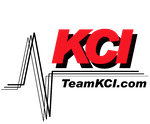Importance of Expert Third-Party Maintenance Services for Your Operations
When it comes to maintaining critical IT infrastructure, organizations have two options: relying on third-party maintenance services or sticking with the original equipment manufacturer (OEM) maintenance. Both options have their advantages and disadvantages, and it’s essential to understand the comprehensive comparison between the two before making a decision.
One crucial aspect of the comparison is cost. OEM maintenance contracts can often be expensive, especially for organizations with a large number of devices. These contracts typically include the cost of warranties and ongoing support from the manufacturer. On the other hand, third-party maintenance providers offer more cost-effective options, as they can provide similar service levels and support without the high price tag. This allows organizations to save money on maintenance costs and allocate their budget to other critical areas of the business.
Another aspect to consider is the level of expertise. OEMs have in-depth knowledge about their specific products and can provide specialized support. They know the equipment inside out and have access to proprietary documentation and training. However, third-party maintenance providers often have broader expertise across multiple manufacturers and models. They deal with various types of IT infrastructure every day and have a wealth of experience in troubleshooting issues. These providers invest in training their technicians and staying up to date with the latest trends and technologies. This enables them to handle a wider range of devices and offer a more comprehensive approach to maintenance and support.
When it comes to responsiveness, third-party maintenance providers are known for their agility and quick response times. They often have dedicated teams of technicians ready to address issues promptly. Their streamlined processes and focus on customer satisfaction enable them to resolve problems efficiently. OEMs, on the other hand, may have larger support centers with more customers to attend to, resulting in potentially longer wait times and delays in issue resolution.
Another crucial factor is the flexibility of services offered. OEMs typically have predefined service level agreements and packages that may not be customizable to an organization’s specific needs. In contrast, third-party maintenance providers can offer more flexibility. They usually tailor their services to align with an organization’s individual requirements, adjusting response times, service coverage, and support levels. This allows organizations to choose the services that best suit their needs and avoid unnecessary expenses.
Moreover, the availability of spare parts is an important consideration. OEMs have direct access to genuine parts, ensuring compatibility and quality. However, third-party maintenance providers often have well-established networks and partnerships, allowing them to source high-quality parts at competitive prices. These providers typically stock a wide range of spare parts, reducing the risk of delays in repairs and maintenance.
However, it’s important to note that some organizations may prioritize the benefits of OEM maintenance. OEMs have the advantage of being the original manufacturers and therefore possess detailed knowledge of the products. They have direct access to software updates, firmware upgrades, and patches, ensuring that their customers’ equipment is always up to date. In addition, organizations that rely heavily on brand reputation, compliance requirements, or industry-specific certifications may prefer the assurance that comes with having OEM maintenance.
In conclusion, the choice between third-party and OEM maintenance depends on an organization’s unique needs, priorities, and budget. While OEM maintenance offers specialized support and direct access to manufacturer-specific resources, third-party maintenance provides cost-effectiveness, broader expertise, flexibility, and responsive service. Organizations should consider their specific requirements and weigh the pros and cons of each option to make an informed decision that aligns with their IT infrastructure management goals.

